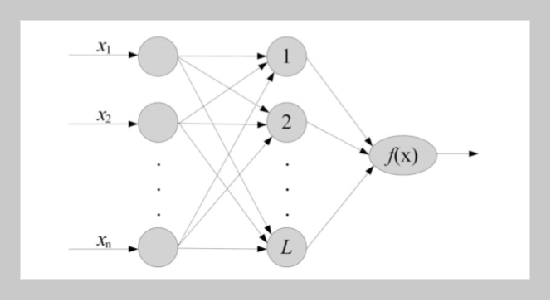REFERENCES
- [1] Dudek, C. L., Messer, C. J. and Nuckles, N. B., “Incident Detection on Urban Freeways,” Transportation Research Record: Journal of the Transportation Research Board, Vol. 495, pp. 12�24 (1974).
- [2] Yang, S., Kalpakis, K. and Biem, A., “Detecting road Traffic Events by Coupling Multiple Timeserieswith a NonparametricBayesianMethod,” IEEETransactions on Intelligent Transportation Systems, Vol. 15, No. 5, pp. 1936�1946 (2014). doi: 10.1109/TITS.2014. 2305334
- [3] Sheu, J. B., “A Sequential Detection Approach to Real-time Freeway Incident Detection and Characterization,” European Journal of Operational Research, Vol. 157, No. 2, pp. 471�485 (2004). doi: 10.1016/ S0377-2217(03)00209-1
- [4] Kinoshita, A., Takasu, A. and Adachi, J., “Real-time Traffic Incident Detection Using a Probabilistic Topic Model,” Information Systems, Vol. 54, pp. 169�188 (2015). doi: 10.1016/j.is.2015.07.002
- [5] Wang, J., Li, X., Liao, S. S. and Hua, Z., “A Hybrid Approach for Automatic Incident Detection,” IEEE Transactions on Intelligent Transportation Systems, Vol. 14, No. 3, pp. 1176�1185 (2013). doi: 10.1109/ TITS.2013.2255594
- [6] Li,L.,He,S.,Zhang, J.andRan,B.,“Short-termHighway Traffic Flow Prediction Based on a Hybrid Strategy Considering Temporal–Spatial Information,” Journal of Advanced Transportation, Vol 50, No. 8, pp. 2029�2040 (2016). doi: 10.1002/atr.1443
- [7] Ghosh, D., Samanwoy and Hojjat, A., “Wavelet-clustering-neural Network Model for Freeway Incident Detection,” Computer-Aided Civil and Infrastructure Engineering, Vol. 18, No. 5, pp. 325�338 (2003). doi: 10.1111/1467-8667.t01-1-00311
- [8] Lu, J., Chen, S., Wang, W. and van Zuylen, H., “AHybrid Model of Partial Least Squares and Neural Network for Traffic Incident Detection,” Expert Systems with Applications, Vol. 39, No. 5, pp. 4775�4784 (2012). doi: 10.1016/j.eswa.2011.09.158
- [9] Khana, S. I. and Ritchieb, S. G., “Statisticaland Neural Classifiers to Detect Traffic Operational Problems on Urban Arterials,” Transportation Research Part C: Emerging Technologies, Vol. 6, No. 5�6, pp. 291�314 (1998). doi: 10.1016/S0968-090X(99)00005-4
- [10] Li, L., He, S., Zhang, J. and Yang, F., “Bagging-SVMs Algorithm-based Traffic Incident Detection,” Proceedings of the 16th COTA International Conference of Transportation Professionals, Shanghai, China, July 4-7, pp. 1461�1469 (2006). doi: 10.1061/978078447 9896.132
- [11] Xiao, J., Gao, X., Kong, Q. J. and Liu, Y., “More Robust and Better: a Multiple Kernel Support Vector Machine Ensemble Approach for Traffic Incident Detection,” Journal of Advanced Transportation, Vol. 48, No. 7, pp. 858�875. doi: 10.1002/atr.1231
- [12] Ma, Y., Chowdhury, M., Jeihani, M. and Fries, R., “Accelerated Incident Detection across Transportation Networks Using Vehicle Kinetics and Support Vector Machine in Cooperation with Infrastructure Agents,” IET Intelligent Transport Systems, Vol. 4, No. 4, pp. 328�337 (2010). doi: 10.1049/iet-its.2010.0035
- [13] Liu, Q., Lu, J., Zhao, K. and Chen, S., “Naive Bayes Classifier Ensemble for Traffic Incident Detection,” In Transportation Research Board 93rd Annual Meeting, Washington D.C, U.S.A., Jan. 10�13 (2014).
- [14] Zhang, K. and Taylor, M. A., “Towards Universal Freeway Incident Detection Algorithms,” Transportation Research Part C: Emerging Technologies, Vol. 14, No. 2, pp. 68�80 (2006). doi: 10.1016/j.trc.2006. 05.004
- [15] Hawas, Y. E., “AFuzzy-based Systemfor Incident Detection in Urban Street Networks,” Transportation Research Part C: Emerging Technologies, Vol. 15, No. 2, pp. 69�95 (2007). doi: 10.1016/j.trc.2007.02.001
- [16] Wang, Y., Li, D., Du, Y. and Pan, Z., “Anomaly Detection in Traffic Using L1-norm Minimization Extreme Learning Machine,” Neurocomputing, Vol. 149, pp. 415�425 (2015). doi: 10.1016/j.neucom.2014.04.073
- [17] Zhang, L., Liu, L. J., Bao, S. N., Qaing, M. T. and Zou, X. M., “Transportation Mode Detection Based on Permutation Entropy and Extreme Learning Machine,” Mathematical Problems in Engineering, Vol. 2015 (2015). doi: 10.1155/2015/940624
- [18] Huang, G. B., Zhou, H., Ding, X. and Zhang, R., “Extreme Learning Machine for Regression and Multiclass Classification,” IEEE Transactions on Systems, Man, and Cybernetics, Part B, Vol. 42, No. 2, pp. 513�529 (2012). doi:10.1109/TSMCB.2011.2168604
- [19] Huang, G., Huang, G. B., Song, S. and You, K., “Trends in Extreme Learning Machines: a Review,” Neural Networks, Vol. 61, pp. 32�48 (2015). doi: 10.1016/j.neunet.2014.10.001
- [20] Yuan, F. and Cheu, R. L., “Incident Detection Using Support Vector Machines,” Transportation Research Part C: Emerging Technologies, Vol. 11, No. 3�4, pp. 309�328(2003).doi:10.1016/S0968-090X(03)00020-2
- [21] Huang, H. L., Hoong, C. and Mazharul, H., “Empirical Evaluation of Alternative Approaches in Identifying Crash Hot Spots: Naive Ranking, Empirical Bayes, and Full Bayes Methods,” Transportation Research Record: JournaloftheTransportation Research Board, Vol. 2103, pp. 32�41 (2009). doi: 10.3141/2103-05
















